Cultivation year 2022 – The field bean is also adaptable
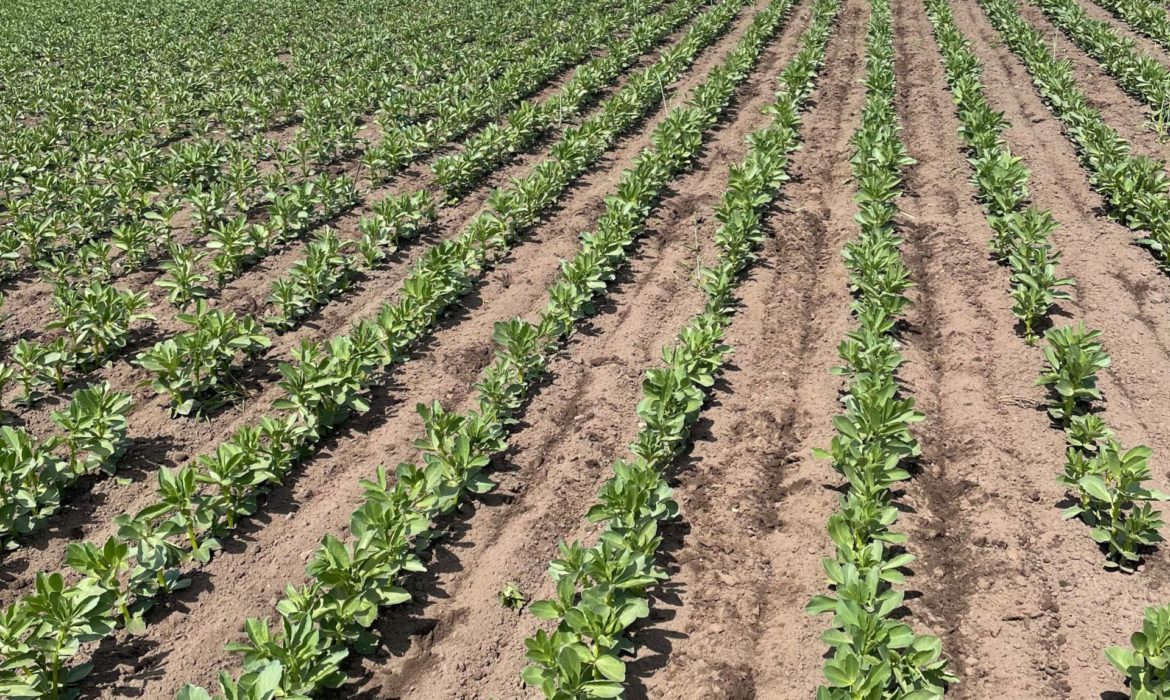
In addition to the demo trial at Gut Wambergen, a randomised field trial was also conducted in the region in cultivation year 2022, in order to provide a more detailed analysis of the CRF concept. A trial site with three repetitions on a sufficiently large area was needed to clarify in detail how the broad bean behaves in the CRF system. The trial was carried out as part of a master’s thesis supervised by the University of Applied Sciences, Soest.
The field bean “Tiffany” was sown on 20.03.22. The sowing rate in the conventional variant was 40 germinable seeds/m², with a row width of 12.5 cm. The theoretical seed gap within the groove is 20 cm. Only 30 seeds/m² were sown in the Modern variant with a double row width (25 cm). The theoretical seed gap within the groove is 13.3 cm in this case. These two variants were sown with an Amazone “Centaya 3000 Super“ standard drill combination.
The two CRF variants with a row spacing of 50 cm were sown with the precision air technology of the “Precea“. 30 seeds/m², with a theoretical seed gap within the groove of 6.7 cm, were also sown in the CRF variants.
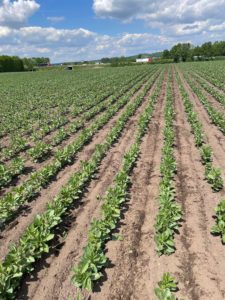
Field beans in the variant CRF 50 cm (BBCH 28 on 12.05.2022)
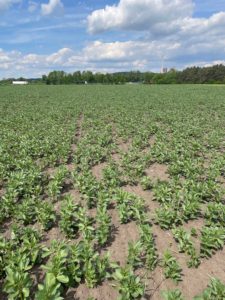
Field bean in the variant Standard 12.5 cm (BBCH 28 on 12.05.2022)
Chemical weed control could not be provided in the pre-emergence in March owing to impassable ground conditions and persistent rainfall. Purely mechanical weed control was selected as an alternative instead. Three measures were carried out with a harrow in each of the four variants between BBCH 13 and 20. These were carried out at intervals of approx. 9 days.
A hoeing machine could also be used in the two CRF variants owing to the 50 cm row spacing. This was carried out in BBCH 28. The undersown crop was also sown between the rows of field beans during hoeing in the CRF-reduced variant. Further crop protection measures could be dispensed with owing to the warm and dry weather conditions in the following weeks. All four trial variants therefore managed completely without chemical plant protection!
Subsequent crop management is restricted to a single application of micro-nutrients in combination with a substance which provides protection against insect pests. The application was uniform across all variants.

Field trial measures
The undersown crop was sown in the CRF-reduced variant during hoeing on 12.05.22. 18 kg/ha of Persian clover was sown between the rows of field beans.

Sowing of the Persian clover during hoeing (12.05.2022)
The Persian clover became well established in the crop, but its development was inhibited as a result of the increasing drought and shading by the beans.
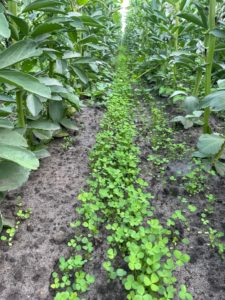
Development of the Persian clover four weeks after sowing (10.06.22)
There were no differences between field emergence and plant height in the further crop development of the variants. The spatial variability caused by the different variants is reflected in the rating of the pods per plant.
The following graphic shows the number of developed pods per plant. It can clearly be seen that the variants with a reduced sowing rate and larger row spacings tillered more densely and developed more pods.
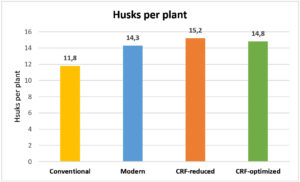
Number of pods per plant

Field beans in full flower with a 50 cm row width (01.06.22)
The field beans were harvested on 31.07.22. The individual repetitions were harvested by means of core threshing and weighed. An average yield of the variants of approx. 30 dt/ha in an extremely dry year was slightly below average for the region.
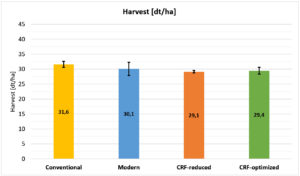
Yields of the trial variants in dt/ha
On the whole, the yields are very similar. Although the Standard variant had the highest yield with 31.6 dt/ha, there is no significant yield difference with a least significant difference of 4.4 dt/ha.
In addition to the results from the field, samples from each variant were examined in the laboratory. The thousand seed weight was relatively constant at 480 to 490 g. The crude protein content of the samples was also very close in all trial variants at 27.7 to 27.9 %. Even if the values have not been statistically checked, we can say that the qualities are consistent. The consistent yields in the field trial suggest that the yields of the lower sowing rates are compensated for by an increased number of pods per plant.
The undersown crop of Persian clover had no negative effect on the yield in the CRF-reduced variant. As might be expected, the competitive vigour of the clover sown at a later date combined with the extremely dry weather conditions was limited.
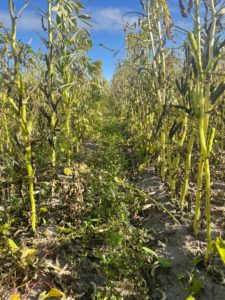
Field bean shortly before harvest with undersown clover in drought stress (20.07.22)

